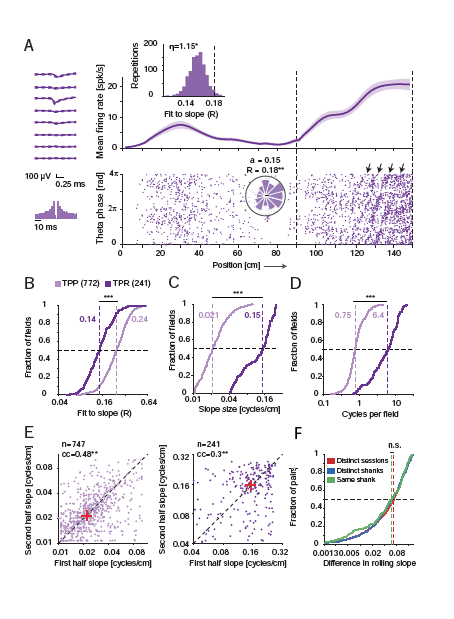Single hippocampal cells encode the spatial position of an animal by increasing their firing rates within “place fields”, and by shifting the phase of their spikes to earlier phases of the ongoing theta oscillations (theta phase precession). Whether other forms of spatial phase changes exist in the hippocampus is unknown. Here, we used high-density electrophysiological recordings in mice of either sex running back and forth on a 150 cm linear track. We found that the instantaneous phase of spikes shifts to progressively later theta phases as the animal traverses the place field. We term this shift theta “phase rolling”. Phase rolling is opposite in direction to precession, faster than precession, and occurs between distinct theta cycles. Place fields that exhibit phase rolling are larger than non-rolling fields, and in-field spikes occur in distinct theta phases in rolling compared to non-rolling fields. As a phase change associated with position, theta phase rolling may be used to encode space.
Hadas Sloin et al of the Stark lab has used DBC probes, including our new double-sided Janus probe to make high density recordings in the mouse hippocampus, read the full case study: The Journal of Neuroscience.
Hadas E. Sloin, Amir Levi, Shirly Someck, Lidor Spivak, Eran Stark
Sagol School of Neuroscience and Department of Physiology and Pharmacology, Sackler Faculty of
Medicine, Tel Aviv University, Tel Aviv 6997801, Israel

